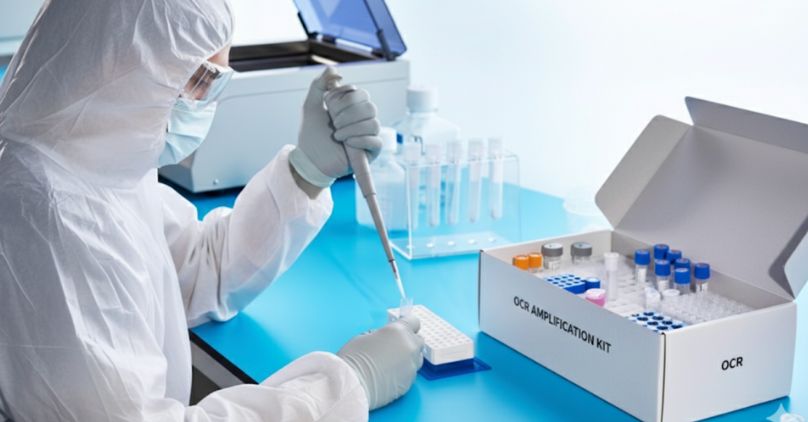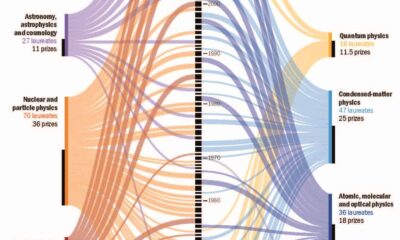Science
Unlocking the Power of PCR: Essential Amplification Kits for Research

The polymerase chain reaction (PCR) has transformed molecular biology by allowing researchers to create millions of DNA copies quickly and efficiently. Since its invention by Nobel Prize winner Kary B. Mullis in 1983, PCR has become fundamental in various scientific applications, including molecular cloning and pathogen detection. The global market for PCR technologies is projected to reach $21.89 billion between 2024 and 2030, reflecting the ongoing demand for this vital technology.
Despite its widespread use, many laboratories face challenges when employing PCR techniques. Issues such as manual preparation of reagents can lead to errors, contamination risks can compromise samples, and inconsistencies in results may hinder experimental outcomes. To address these challenges, PCR amplification kits have emerged as a reliable solution for researchers.
Understanding PCR Amplification Kits
PCR amplification kits consist of premixed, ready-to-use reagents essential for the PCR process, including DNA, polymerase, primers, and nucleotides. These kits facilitate the production of DNA copies in a matter of minutes and find applications in disease diagnosis, forensic analysis, and quality control. Researchers primarily utilize these kits for several key tasks, including:
– Gene cloning and recombinant DNA experiments
– Pathogen detection in microbial or viral research
– RNA analysis in gene expression studies
– Preparation for sequencing or mutational analysis
Using premixed reagents minimizes human error and enhances consistency across experiments. Additionally, they streamline laboratory workflows, allowing researchers to concentrate on data analysis rather than preparation.
Key Components of PCR Kits
Every PCR amplification kit includes several core components necessary for effective DNA or RNA replication. These components are:
– **DNA Polymerase**: An enzyme crucial for copying DNA. High-fidelity polymerases are particularly important for minimizing replication errors during cloning or sequencing.
– **Primers**: Short sequence-specific oligonucleotides that define the DNA or RNA region to be amplified. Their design significantly affects both specificity and efficiency.
– **dNTPs (Deoxynucleotide Triphosphates)**: The building blocks of DNA, which are incorporated into the growing DNA strand during the amplification process.
– **Buffers and Magnesium Ions (Mg2+)**: Buffers maintain the optimal chemical environment for enzyme activity, stabilizing reactions and improving polymerase efficiency.
– **Controls**: Positive controls verify the functionality of reagents and conditions, while negative controls help identify contamination or non-specific amplification.
These components work synergistically to facilitate smooth sequencing or cloning, enabling researchers to conduct complex tests with minimal errors.
Diverse PCR Techniques for Research
PCR is versatile, offering various methodologies tailored to different research needs. The primary techniques include:
– **Conventional PCR**: The classic version of PCR that produces multiple DNA copies, with results typically verified using gel electrophoresis. It serves fundamental tasks such as DNA cloning and genetic difference studies.
– **Real-Time PCR (qPCR)**: This method incorporates fluorescent markers to monitor DNA amplification in real-time. Researchers can utilize qPCR to assess gene activity, quantify viral loads, or compare DNA copy numbers across samples.
– **One-Step RT-PCR**: This version simplifies the process by converting RNA into DNA and amplifying it in a single step, facilitating rapid analysis of RNA viruses or gene expression patterns.
– **Two-Step RT-PCR**: RNA is first converted to DNA, followed by separate PCR amplification. Although more time-consuming, this method allows for greater flexibility in advanced studies, such as sequencing or multi-gene testing.
Steps Involved in PCR
A typical PCR reaction comprises three primary steps, repeated for 25 to 35 cycles within a thermocycler to generate substantial DNA quantities:
1. **Denaturation**: The DNA sample is heated to between 94°C and 98°C for 20 to 30 seconds, separating double-stranded DNA into single strands by breaking hydrogen bonds.
2. **Annealing**: The mixture is cooled to between 45°C and 68°C for 15 to 40 seconds, allowing primers to bind to their complementary sequences on the single strands. The optimal temperature depends on primer design.
3. **Extension**: The temperature is raised to between 68°C and 75°C for 30 to 60 seconds, enabling the DNA polymerase to utilize the primers as starting points for synthesizing new DNA strands.
Typically, these steps are repeated 25 to 35 times, culminating with a final extension step of 5 to 10 minutes at 72°C to ensure that all DNA fragments are fully synthesized before the reaction concludes.
Troubleshooting Common PCR Challenges
Even with high-quality kits, researchers may encounter challenges during PCR experiments. Common issues include low yield, non-specific bands, contamination, and failed reactions.
– **Low Amplification Yield**: This often results from low magnesium ion concentration, incorrect annealing temperature, or poor template quality. Solutions include increasing cycle numbers or template amounts and optimizing temperature settings.
– **Non-Specific Bands**: Such amplification can arise from improper primer design or low annealing temperatures. Strategies to mitigate this issue involve using hot-start polymerases, redesigning primers for enhanced specificity, and adjusting annealing temperatures.
– **Contamination**: Contamination from environmental factors or amplified products can lead to false positives. Preventative measures include physical separation of pre- and post-PCR areas, using dedicated pipettes, wearing gloves, and including negative controls.
– **Failed Reactions**: Reactions may fail due to degraded templates, missing reagents, or instrument malfunctions. Addressing these issues requires running positive control reactions and verifying the integrity of reagents and temperature controls before initiating experiments.
Advantages of Ready-To-Use PCR Kits
The adoption of ready-to-use PCR kits provides several benefits for researchers:
– **Time Efficiency**: Kits come with pre-mixed reagents, expediting setup and reducing preparation time.
– **Consistency**: Standardized components yield reliable and reproducible results across experiments.
– **Reduced Contamination Risks**: Decreased handling minimizes the likelihood of contamination and pipetting errors.
– **Scalability**: Kits are suitable for both small-scale tests and large-scale, high-throughput studies.
– **Versatility**: They can be applied across various research fields, including gene cloning, RNA studies, and pathogen detection.
In summary, PCR amplification kits are integral to contemporary molecular biology research. Their ready-to-use reagents not only streamline workflows but also enhance the reliability of results. Whether in gene cloning, pathogen detection, or environmental testing, these kits enable scientists to accelerate their research and focus on groundbreaking discoveries.
-

 Entertainment2 months ago
Entertainment2 months agoAnn Ming Reflects on ITV’s ‘I Fought the Law’ Drama
-

 Entertainment3 months ago
Entertainment3 months agoKate Garraway Sells £2 Million Home Amid Financial Struggles
-

 Entertainment2 months ago
Entertainment2 months agoCoronation Street’s Carl Webster Faces Trouble with New Affairs
-

 Health1 month ago
Health1 month agoKatie Price Faces New Health Concerns After Cancer Symptoms Resurface
-

 Entertainment1 month ago
Entertainment1 month agoWhere is Tinder Swindler Simon Leviev? Latest Updates Revealed
-

 Entertainment3 months ago
Entertainment3 months agoKim Cattrall Posts Cryptic Message After HBO’s Sequel Cancellation
-

 Entertainment2 months ago
Entertainment2 months agoMasterChef Faces Turmoil as Tom Kerridge Withdraws from Hosting Role
-

 Entertainment3 months ago
Entertainment3 months agoSpeculation Surrounds Home and Away as Cast Departures Mount
-

 World1 month ago
World1 month agoCole Palmer’s Mysterious Message to Kobbie Mainoo Sparks Speculation
-

 Entertainment2 months ago
Entertainment2 months agoITV’s I Fought the Law: Unraveling the True Story Behind the Drama
-

 Entertainment4 weeks ago
Entertainment4 weeks agoCaz Crowned Winner of The Great British Sewing Bee, Overjoyed by Triumph
-

 Entertainment3 months ago
Entertainment3 months agoMarkiplier Addresses AI Controversy During Livestream Response















